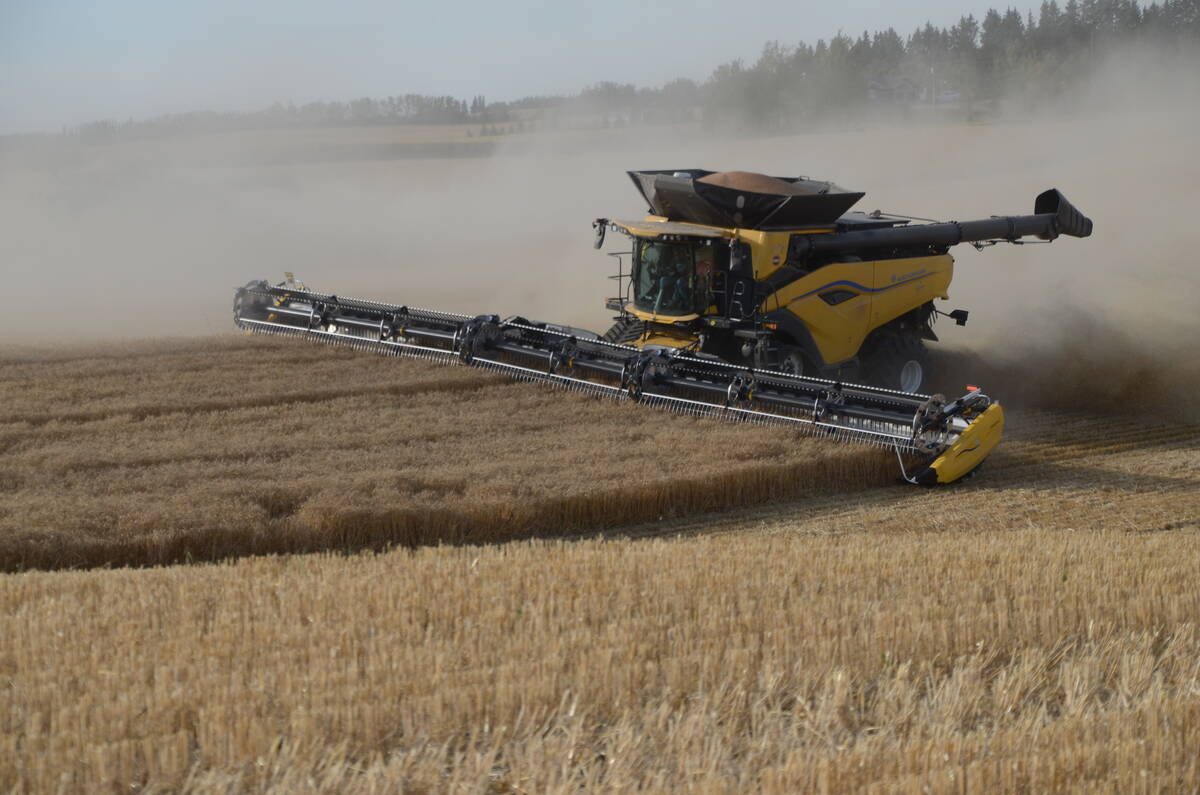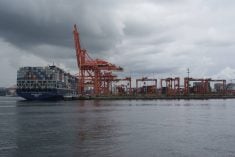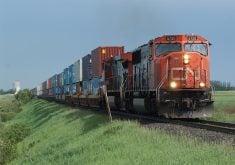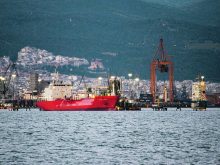The Vancouver Fraser Port Authority handled record cargo in 2024, highlighting its vital role in the country’s trade infrastructure, but when its efficiency is compared to other global ports, its grades are dismal.
Port expansion is critical for its continued relevance and for Canada’s trading future, but its most ambitious project is only now emerging from a decade-long review.
The port’s multibillion-dollar Roberts Bank Terminal Two project would see a container port built on an artificial island near the mouth of the Fraser River south of Vancouver, in an area where a ferry terminal and coal port already operate.
Read Also

Grain farming on solid financial ground: Farm Credit Canada
There may be situations are farmers are stretched financially, but overall the industry is healthy, says FCC
It would expand container-handling capacity by more than 30 percent on Canada’s West Coast.
Vancouver is already the overwhelming gateway for Canada’s trade.
“Almost as much cargo moved through the Port of Vancouver in 2024 as was handled by Canada’s next five largest ports combined, and approximately 80 per cent of the international trade it enabled was Canadian trade with countries other than the U.S,” said a port news release.
The port handled a record 158 million tonnes, of which 29 million were bulk grain and 900,000 tonnes canola oil.
North America’s most diversified port also handles petroleum product exports, which almost quadrupled to 15 million tonnes as the Trans Mountain pipeline expansion started shipping in May. Trans Mountain had its own history of regulatory and legal delays and cost over-runs.
Roberts Bank Terminal Two was first proposed in 2003. It began federal and provincial review in 2013 and gradually accumulated approvals by 2023.
It has won support from many local municipalities, business groups and First Nations, although there are also opponents.
Federal cabinet approval in 2023 came with 370 legally binding conditions to protect the environment and preserve local species.
However, that wasn’t enough for several environmental groups that went to court, arguing the project didn’t comply with the Species at Risk Act because it would threaten the survival of the endangered southern resident killer whale group that ranges from California to southern British Columbia and destroy a swath of habitat for chinook salmon on which the whales feed.
The federal court dismissed the case in January, saying the environment minister complied with the species at risk legislation.
The port authority hopes to begin construction in 2028 with operations beginning in the mid-2030s, about 20 years after the reviews began.
Canada’s lagging productivity has been an issue for years, and one of the causes is the regulatory and legal hurdles that make it so difficult to get major projects built.
Conservative leader Pierre Poillievre has long complained about the problems, and even the new Liberal prime minister, Mark Carney, has turned his party’s track record on its head by promising to simplify processes and slash timelines for reviews and public and Indigenous consultations.
The inability to get important projects built in an affordable and timely manner affects many developed countries. Look at the troubles in the United Kingdom and California in building high speed passenger railways.
The impediments are a response to the negative effects of past developments that, while building the infrastructure and industry we benefit from today, left in their wake much destruction.
Past projects moved quickly but too often ran roughshod over the environment, wildlife and the rights of local and Indigenous populations.
Public opinion and the courts demanded that government rein in the excesses of unrestricted development.
However, the pendulum has swung too far in favour of regulation, a focus on process rather than results and trying to please competing interest groups.
The resulting stagnation stifles economic growth that people need to enjoy life.
Can we shift the pendulum back without swinging too far?
This was a weighty problem for my mind as I wrote this, so I decided to break for lunch. I turned on the TV and came across a documentary on the Indigenous network APTN, the 10th episode of a 13-part series called Water Worlds.
This episode covered the Nak’azdli Whut’en First Nation in the Stuart Lake region of British Columbia where salmon, once abundant, have all but disappeared because of development and pollution.
The nation is working to return salmon to local streams using a new compact technology called “hatchery in a box,” specifically a shipping container.
It was a good news story about repairing past damages to salmon and the First Nations who relied on them.
How is the hatchery funded? It was one of the requirements for the Coastal Gas Link Pipeline project, linking the gas fields of northern B.C. to the new, massive liquid natural gas plant built by LNG Canada at Kitimat on the coast.
So maybe there is a way to build big projects and protect the environment at the same time.
To contact D’Arce McMillan, email newsroom@producer.com.















